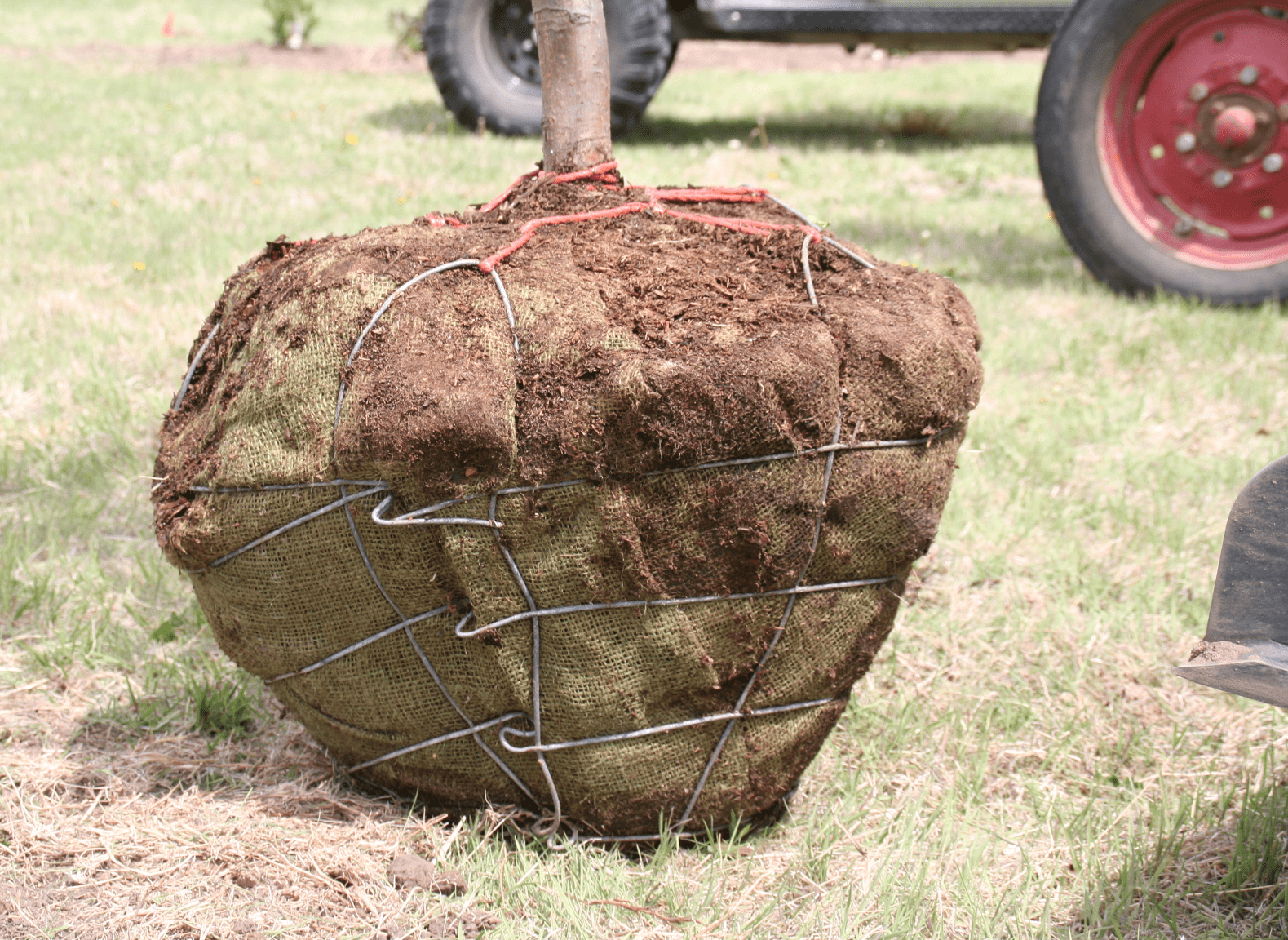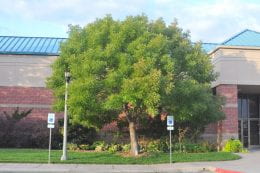By Jason Griffin, Professor and Extension Specialist, John C. Pair Horticultural Center Director
We’ve all heard it and probably repeated it. But why is this slogan so common-place, and is it accurate…Is Fall really a good time to plant?
First, there is the emotional side. As summer fades away and yields to cooler temperatures, more frequent rain events, and beautiful fall colors; it just feels like the right time to plant a new tree or shrub.
Second, there is the economic side. Many nurseries offer fall specials on their inventory. The simple truth is that any plant that does not sell, has to be moved and stored for overwinter survival. This involves labor, consumes valuable space, and uses mulch or plastic to protect the plants from freezing winter temperatures. Nurseries would prefer to sell plants rather than store them.
 Last, there is the plant side. Is fall a good time to plant a new tree or shrub? Yes, and here is why. The primary job of a newly planted tree or shrub is to grow roots for survival. New roots are necessary for balled and burlapped plants to replace the ones lost during the harvest process at the nursery. If it’s a container plant, new roots are necessary to explore the soil and find nutrients and moisture necessary for long term survival. For the first year of a new plant’s life, it’s all about the roots!
Last, there is the plant side. Is fall a good time to plant a new tree or shrub? Yes, and here is why. The primary job of a newly planted tree or shrub is to grow roots for survival. New roots are necessary for balled and burlapped plants to replace the ones lost during the harvest process at the nursery. If it’s a container plant, new roots are necessary to explore the soil and find nutrients and moisture necessary for long term survival. For the first year of a new plant’s life, it’s all about the roots!
So why plant in Fall? Woody plants have two primary seasons for growing roots, and it’s NOT winter or summer. Frozen soil and slow metabolism prevent much root growth in during winter in cold regions of the country. Frequent droughty conditions combined with searing summer temperatures limits root growth during a hot summer. In Kansas we have both. Most root growth on woody plants occurs during spring and fall in the temperate region.
 Trees planted in spring have only a few weeks of peak root growth before Mother Nature unleashes the environmental stresses that come with summer weather. However, trees planted in fall have the long fall and early winter season to grow roots before they go dormant. As the soil warms in spring, they get another season of root growth prior to the stress of summer in Kansas. Fall planted trees, therefore, have the advantage of two full seasons of root growth before summer drought and heat strike. It’s not too late. As long as the soil isn’t frozen at your planting site, you can still get plants in the ground. So is spring a bad time to plant? No, spring is a great time to plant. Those trees just need a little more TLC during that first summer than fall planted trees.
Trees planted in spring have only a few weeks of peak root growth before Mother Nature unleashes the environmental stresses that come with summer weather. However, trees planted in fall have the long fall and early winter season to grow roots before they go dormant. As the soil warms in spring, they get another season of root growth prior to the stress of summer in Kansas. Fall planted trees, therefore, have the advantage of two full seasons of root growth before summer drought and heat strike. It’s not too late. As long as the soil isn’t frozen at your planting site, you can still get plants in the ground. So is spring a bad time to plant? No, spring is a great time to plant. Those trees just need a little more TLC during that first summer than fall planted trees.
Happy planting!

